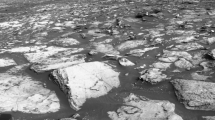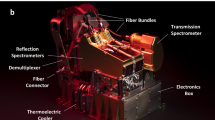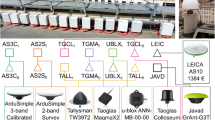Abstract
An FPGA-based digital-receiver has been developed for a low-frequency imaging radio interferometer, the Murchison Widefield Array (MWA). The MWA, located at the Murchison Radio-astronomy Observatory (MRO) in Western Australia, consists of 128 dual-polarized aperture-array elements (tiles) operating between 80 and 300 MHz, with a total processed bandwidth of 30.72 MHz for each polarization. Radio-frequency signals from the tiles are amplified and band limited using analog signal conditioning units; sampled and channelized by digital-receivers. The signals from eight tiles are processed by a single digital-receiver, thus requiring 16 digital-receivers for the MWA. The main function of the digital-receivers is to digitize the broad-band signals from each tile, channelize them to form the sky-band, and transport it through optical fibers to a centrally located correlator for further processing. The digital-receiver firmware also implements functions to measure the signal power, perform power equalization across the band, detect interference-like events, and invoke diagnostic modes. The digital-receiver is controlled by high-level programs running on a single-board-computer. This paper presents the digital-receiver design, implementation, current status, and plans for future enhancements.







Similar content being viewed by others
Notes
XCV4SX35-10FFG668I or C
The ADFB board, PFB library, FTDI card and the associated low-level programs were developed by the ICT division of CSIRO.
XC5VSX50T-1FFG665C
References
Lonsdale et al.: The murchison widefield array: design overview. IEEE Proc. 97(8), 1497–1506 (2009)
Tingay et al.: The murchison widefield array: the square kilometre array precursor at low radio frequencies. Publ. Astron. Soc. Aust. 30 (2013). id.e007 21 pp
Bowman et al.: Science with the murchison widefield array. Publ. Astron. Soc. Aust. 30 (2013). id.e031 28 pp
Briggs, H.F.: MWA-LFD Receiver Node Subsystem, MWA knowledge tree (2007)
Bowman et al.: Field deployment of prototype antenna tiles for the mileura widefield array low frequency demonstrator. Astron. J. 133, 1505Y1518 (2007)
Beardsley et al.: A new layout optimization technique for interferometric arrays, applied to the MWA. Mon. Not. R. Astron. Soc. 425(3), 1781–1788 (2012)
Chikada, Y., et al.: A very fast FFT spectrum analyzer for radio astronomy. Acoust., Speech, Signal Process., IEEE Int. Conf. ICASSP ’86 11, 2907–2910 (1987)
Thompson, A.R., Moran, J.M., Swenson, Jr. G.W., Swenson, Jr. G.W.: Interferometry and Synthesis in Radio Astronomy 2nd Edition, ISBN: 978-0-471-25492-8 (2001)
Wu, C., Wicenec, A., Pallot, D., Checcucci, C.: Optimising NGAS for the MWA Archive. Exp. Astron. 36(3), 679–694 (2013)
Thompson, A.R., Clark, B.G., Granlund, J.: An Application of Walsh Functions in Radio Astronomy Instrumentation Electromagnetic Compatibility. IEEE Trans. EMC-20(3), 451–453 (1978)
Schneeweiss, H., Komlos, J., Ahmad, A.S.: Symmetric and asymmetric rounding: a review and some new results. Adv. Stat. Anal. 94(3), 247–271 (2010)
Bellanger, M.G., Bonnerot, G., Coudreuse, M.: Digital filtering by polyphase network: Application to sample-rate alteration and filter banks. IEEE Trans. Acoust., Speech Signal Process. 24(2), 109–114 (1976). doi:10.1109/TASSP.1976.1162788
Vaidyanathan, P.P.: Multirate digital filters, filter banks, polyphase networks, and applications: a tutorial. IEEE Proc. 78, 56–93 (1990). doi:10.1109/5.52200
Prabu et al.: A Full-band Voltage Beamforming mode for the Murchison Widefield Array Digital Receiver, MWSKY 2013 conference proceedings, ASI (submitted, 2014)
Bunton, J.D.: SKA Correlator Advances. Exp. Astron. 17(1–3), 251–259 (2004)
Bernardi et al: A 189 MHz, 2400 square degree polarization survey with the Murchison Widefield Array 32-element prototype. Astrophys. J. 771(2) (2013). article id. 105, 16 pp
Bell et al.: A survey for transients and variables with the Murchison Widefield Array 32-tile prototype at 154 MHz. Mon. Not. R. Astron. Soc. 438(1), 352–367 (2014)
Oberoi et al.: First Spectroscopic Imaging Observations of the Sun at Low Radio Frequencies with the Murchison Widefield Array Prototype. Astrophys. J. Lett. 728 (2) (2011). article id. L27
McKinley et al.: The giant lobes of Centaurus A observed at 118 MHz with the Murchison Widefield Array. Mon. Not. R. Astron. Soc. 436(2), 1286–1301 (2013)
McKinley et al.: Low frequency observations of the moon with the murchison widefield array. Astron. J. 145(1) (2013). article id. 23, 9 pp
Tingay et al.: The Murchison Widefield Array: solar science with the low frequency SKA Percursor. J. Phys.: Conf. Ser. 440(1) (2013). article id. 012033
Bhat et al.: The low-frequency characteristics of PSR J0437-4715 observed with the Murchison Widefield Array. Astrophys. J. Lett. 791(2) (2014). article id. L32, 6 pp.
Hindson et al.: The First Murchison Widefield Array low frequency radio observations of cluster scale non-thermal emission: the case of Abell 3667. Mon. Not. R. Astron. Soc. 445(1), 330–346 (2014)
Acknowledgments
This scientific work makes use of the Murchison Radio-astronomy Observatory, operated by CSIRO. We acknowledge the Wajarri Yamatji people as the traditional owners of the Observatory site. Support for the MWA comes from the U.S. National Science Foundation (grants AST-0457585, PHY-0835713, CAREER-0847753, and AST-0908884), the Australian Research Council (LIEF grants LE0775621 and LE0882938), the U.S. Air Force Office of Scientific Research (grant FA9550-0510247), and the Centre for All-sky Astrophysics (an Australian Research Council Centre of Excellence funded by grant CE110001020). Support is also provided by the Smithsonian Astrophysical Observatory, the MIT School of Science, the Raman Research Institute, the Australian National University, and the Victoria University of Wellington (via grant MED-E1799 from the New Zealand Ministry of Economic Development and an IBM Shared University Research Grant). The Australian Federal government provides additional support via the Commonwealth Scientific and Industrial Research Organisation (CSIRO), National Collaborative Research Infrastructure Strategy, Education Investment Fund, and the Australia India Strategic Research Fund, and Astronomy Australia Limited, under contract to Curtin University. We acknowledge the iVEC Petabyte Data Store, the Initiative in Innovative Computing and the CUDA Center for Excellence sponsored by NVIDIA at Harvard University, and the International Centre for Radio Astronomy Research (ICRAR), a Joint Venture of Curtin University and The University of Western Australia, funded by the Western Australian State government. The National Radio Astronomy Observatory (NRAO) is a facility of the National Science Foundation operated under cooperative agreement by Associated Universities, Inc. The authors also acknowledge the contributions from the Raman Research Institute members: Somashekar for the X1 expedition, Girish for testing the PFB, Kasturi for qualifying the ADFB analog inputs and for developing a noise source, Ananth, Arasi, Mamatha, Sandhya and Sujatha for making the 16 channel analog input system used for testing the digital-receiver, Vinutha for the work with the USB card, Sarabagopalan for the cold test setup, Vinod for the ADFB ID cards, Wenny for making the Clock/SCTN distribution board for the 32T digital-receivers, Peeyush Prasad and C R Subramanya for providing the UDP code for the AgFo, Mechanical Engineering Services for making the power-splitter enclosures and the heat-sink mounts, Ravi Sankar for the electro-plating work, Mamatha Bai and RRI Administration for taking care of the administrative logistics, purchase team for the procurements, and the computer group for their support with linux and networking; Franz Schlagenhaufer at ICRAR for the Electromagnetic Compatibility tests of the MWA receiver and Jonathan Tickner at ICRAR for the support during the receiver integration tests; Mark Leach and Ron Ekers at CSIRO for sharing their expertise; and the Halleens at Boolardy for the warm hospitality during the site visits.
Author information
Authors and Affiliations
Corresponding author
Rights and permissions
About this article
Cite this article
Prabu, T., Srivani, K.S., Roshi, D.A. et al. A digital-receiver for the MurchisonWidefield Array. Exp Astron 39, 73–93 (2015). https://doi.org/10.1007/s10686-015-9444-3
Received:
Accepted:
Published:
Issue Date:
DOI: https://doi.org/10.1007/s10686-015-9444-3




